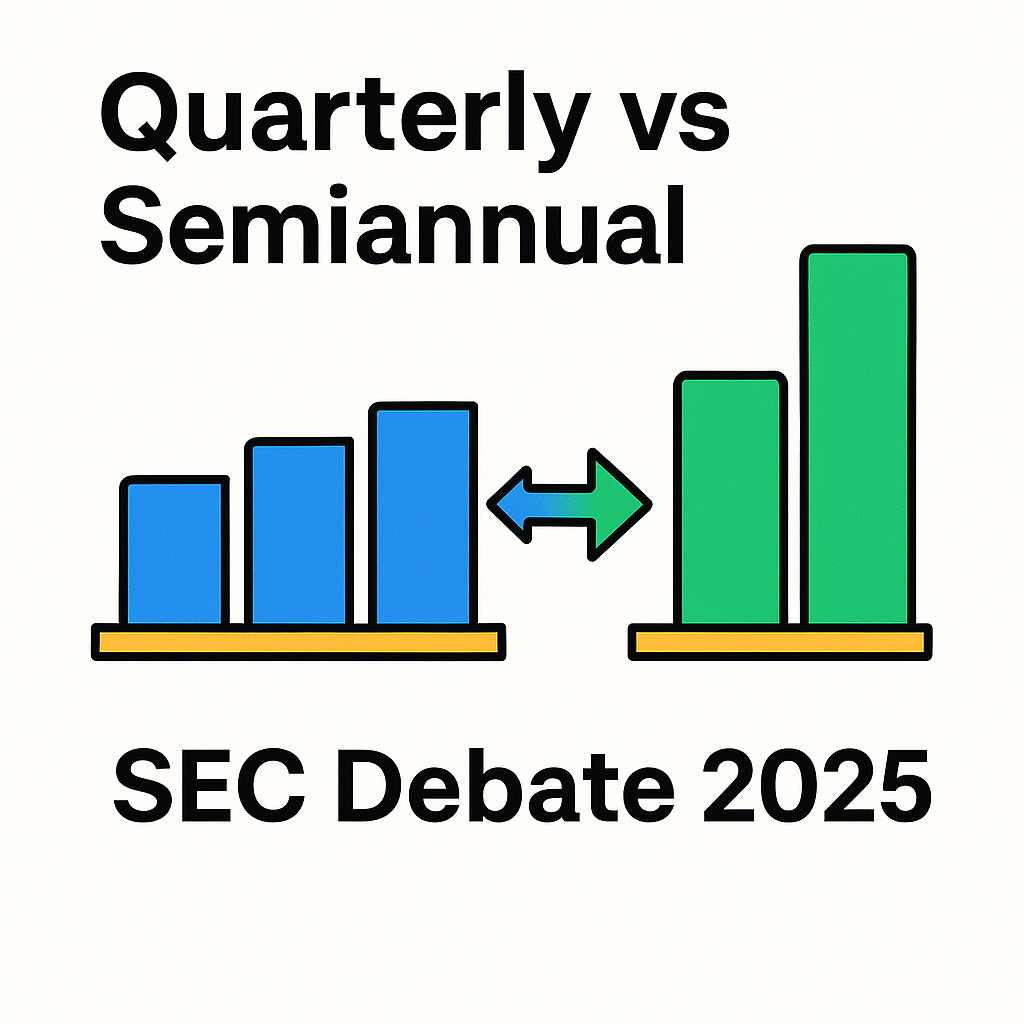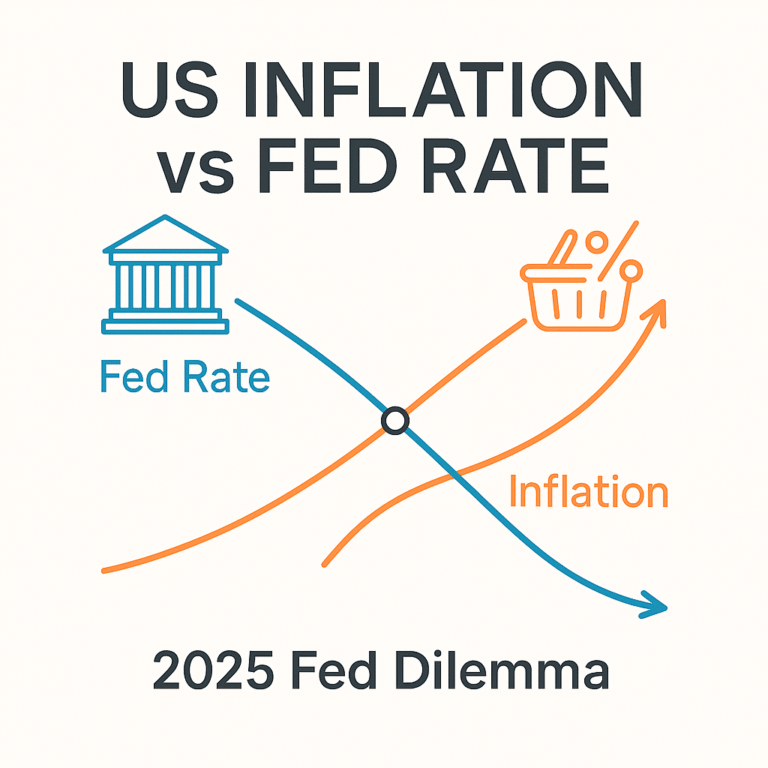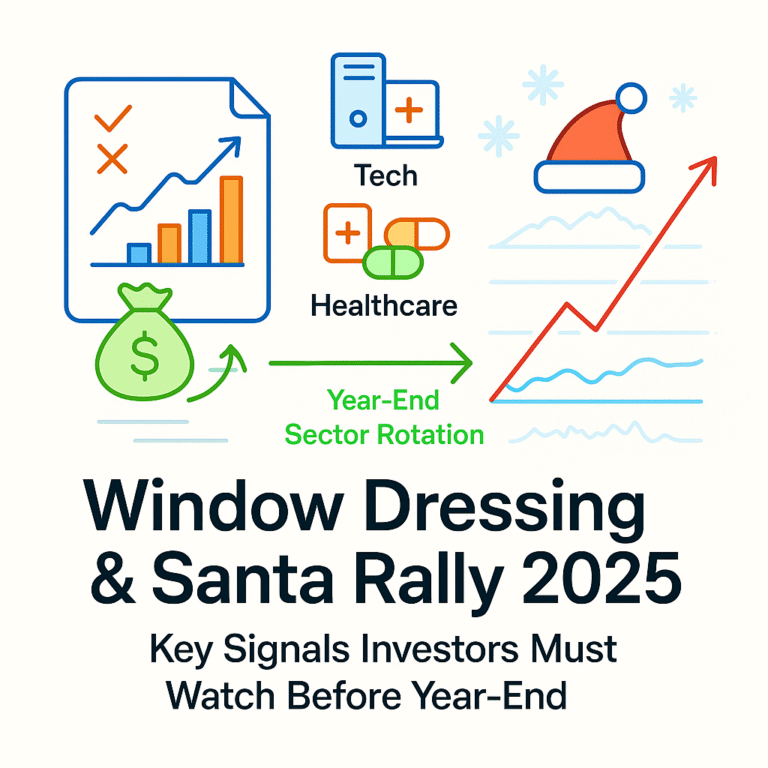US Companies Semiannual vs Quarterly Earnings Reports: SEC Debate and Market Impact
The SEC is considering replacing quarterly earnings reports with semiannual filings. Learn the pros and cons, global comparisons, and what it means for long-term and short-term investors.
Key Takeaways
✔ Trump and Nasdaq’s CEO support semiannual corporate reporting instead of quarterly filings
✔ Companies may cut costs and focus more on long-term growth strategies
✔ Investors face risks of lower transparency and longer reporting gaps
✔ UK and EU already use semiannual earnings reports, but many firms still publish quarterly voluntarily
✔ SEC debate on ending quarterly reporting in 2025 could reshape investor expectations
The US is once again debating whether companies should move from quarterly earnings reports to semiannual filings. In September 2025, former President Donald Trump revived his proposal, and Nasdaq CEO Adena Friedman voiced support. Their argument is clear: frequent quarterly reports trap companies in a short-term cycle, while semiannual reporting may allow more focus on long-term growth.
This SEC debate on ending quarterly reporting in 2025 is more than a technical policy change. It could reshape corporate strategy, investor transparency, and the balance between long-term investors and short-term traders in US markets.
How Quarterly Reporting Became the US Standard
Since the early 1970s, the SEC has required US companies to file quarterly earnings reports. The original goal was investor protection and transparency. Over time, however, critics say the system has encouraged short-termism, forcing executives to chase short-term profits at the expense of innovation.
The US debate on semiannual vs quarterly earnings reports mirrors global precedents. The UK and EU previously adopted quarterly reporting, only to shift back to semiannual filings due to cost concerns.
Comparing Costs and Transparency in Semiannual vs Quarterly Reporting
Quarterly earnings filings keep investors updated and help detect risks early. Yet they impose high compliance costs on companies, including accounting, legal, and audit expenses. Semiannual reporting could ease these burdens, especially for smaller firms, while giving management more time to focus on long-term growth strategies.
The trade-off is transparency. Semiannual corporate reporting means longer information gaps, creating potential risks for investors. This makes the balance between long-term investors and short-term investors even more critical.
|
Factor |
Quarterly Earnings Reports |
Semiannual Earnings Reports |
|---|---|---|
|
Filing frequency |
4 times a year |
2 times a year |
|
Corporate costs |
Higher compliance costs |
Reduced burden |
|
Management focus |
Short-term earnings pressure |
More space for long-term strategy |
|
Investor transparency |
Frequent updates |
Longer information gaps |
|
Market trust |
Stable, predictable flow |
Risk of volatility and asymmetry |
|
Global precedent |
UK/EU dropped quarterly rules but many firms still report voluntarily |
Semiannual mandatory filings only |
What Investors Gain and Lose in Semiannual Corporate Reporting
For investors, quarterly earnings reports deliver a steady flow of data that supports risk management and informed trading. Semiannual filings, however, could leave investors blind to developments for up to six months.
This SEC debate matters because longer gaps may lead to greater reliance on analyst reports and alternative data. Information asymmetry could grow, allowing insiders to benefit while retail investors face more uncertainty.
Expert Views on the Pros and Cons of Semiannual Reporting
CFOs and many executives welcome fewer filings. They argue semiannual corporate reporting would free them from the “earnings treadmill,” giving more time to pursue R&D, hiring, and innovation.
On the other hand, academics and legal experts stress the risks. Georgetown law professor David Langevoort warns: “Investors deserve to know material risks when they happen. Delayed reporting makes risks harder to detect.” This shows why long-term investors vs short-term investors have sharply different views.
How US Companies and Global Markets Could Be Affected
If quarterly earnings reports end, companies may benefit from lower compliance costs and stronger focus on long-term growth. But investors could lose transparency, leading to reduced liquidity and market volatility.
In the UK and EU, semiannual filings became standard, but many companies still publish quarterly updates voluntarily. This suggests US firms may also choose a mixed approach, balancing cost savings with investor trust.
What’s Next for the SEC Debate on Ending Quarterly Reporting
The SEC must review, propose, and approve any change to reporting rules. This process involves public comment and could take years.
Even if quarterly reports become optional, many US companies will likely continue them. For investors, the key will be tracking which companies stick with quarterly reporting and which shift to semiannual reporting. Portfolio strategies will need to adapt accordingly.
The debate over US companies semiannual vs quarterly earnings reports reflects a fundamental trade-off: efficiency for companies versus transparency for investors. The SEC’s decision could shift market behavior, investor trust, and the balance between long-term and short-term strategies.
Investors should prepare for possible changes by monitoring disclosure policies of portfolio companies and considering how reduced transparency could affect investment decisions.







